Understanding User Experience (UX) | UX Series Part 1 of 6
This is article 1 of 6 in the series User Experience (UX).
A while ago I took a User Experience (UX) course and have compiled some notes that I'd like to share here, which may be useful for those interested in UX.
Context
User Experience (UX), also known as User-Centered Design (UCD), is a crucial aspect of digital skills. It extends beyond the User Interface (UI), which is merely how users interact on a screen. UX encompasses every interaction that a customer has with a business, both online and offline.
... so user experience design is something that begins at the very start of an idea, and it goes all the way through the lifetime of your product or your site.
The Essence of UX
UX design begins at the inception of an idea and continues throughout the product's lifespan. It's about understanding and addressing the needs and preferences of users. The process involves:
- Researching Users: Understanding their needs, likes, and dislikes.
- Iterative Feedback: Continuously refining the design based on user feedback.
A well-designed UX minimizes pain points in the user journey, ensuring a successful and intuitive design.
UX is all about minimising those pain points in the journey to ensure that your website has the most successful design possible.
Foundations of UX Design
There are three key foundations or ideas of UX design:
1. User-Centered Mind-Set
Focus on trying to understand the user, approaching with curiosity and asking questions like "Why?" and "What if?".
- Don't assume that you know what the user wants and needs
- Don't assume that you know what the solution is.
2. Key Stages of UX Process
- Discover: Research and understand the user.
- Describe: Define the problem and the solution.
- Design: Create a prototype.
- Develop: Build the product.
- Continuously improve: Test and refine the product based on user feedback.
3. Principles of Good Usability
- Simplicity: Keep it simple. Complexity is the enemy of good design.
- Intuitiveness: Make it easy to use. Your user should not need a manual to use your product if you can prevent it. (No one reads manuals anyway because is always easier to google it or call support.)
-
Engagement: Make it enjoyable to use.
- This is not always possible, but it is a good goal to have.
- If you can't make it enjoyable, at least make it not annoying.
- Efficiency: Make it fast to use or at least make it feel fast or not slow.
- Support: Provide easy-to-access support when needed, but don't make it necessary.
- Error recovery: Make it easy to recover from errors.
-
Consistency: Make it consistent throughout the product. The customer should not feel like they are using
products from different companies when they are just using different parts of your product.
Best Practices in UX
- Placement of menus and icons: place the menu where the user expects it to be -> top or left side.
- Consistent design throughout the product: consistent colors, fonts, icons, layout, etc.
- Attention to details that enhance user retention. If you can make the user feel good about using your product, they will come back and be happy with what they bought. If they don't feel good, they will regret their buying decision.
IMPORTANT
An effective UX team comprises members from diverse backgrounds, enriching the design process with varied perspectives.
Tools for UX Design
Various tools aid in UX design, such as:
- Wireframing Tools: Balsamiq Mockups, Sketch, Axure, Figma, Adobe XD, PenPot
- Design Prototyping Tools: Invision, Marvel, Adobe XD, Figma, PenPot
- Image Editing Software: Adobe Photoshop, Adobe Illustrator, GIMP, Inkscape, Krita, Affinity Photo
Key takeaways
UX design is a dynamic, ongoing process integral to the success of any (digital) product. It requires a deep understanding of the user and a commitment to continual improvement based on feedback and evolving user needs. It also requires a multidisciplinary team with diverse perspectives and skills.
Recommended reading according to the course
